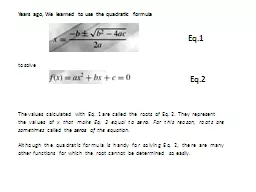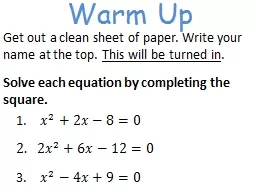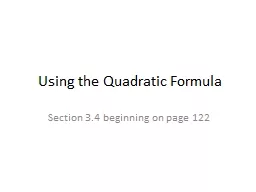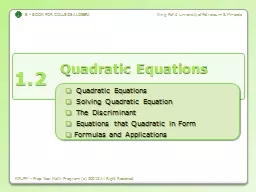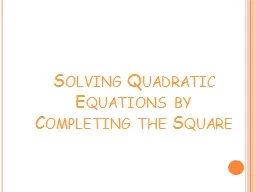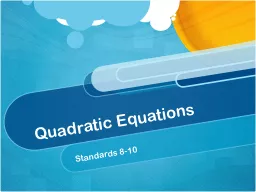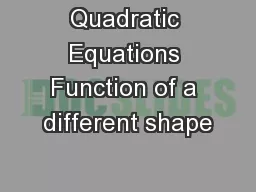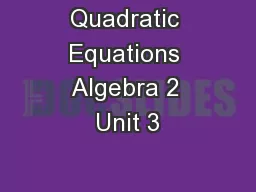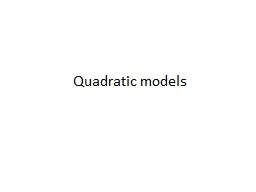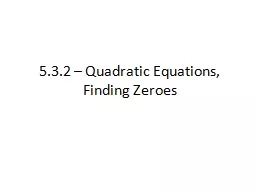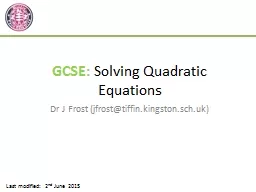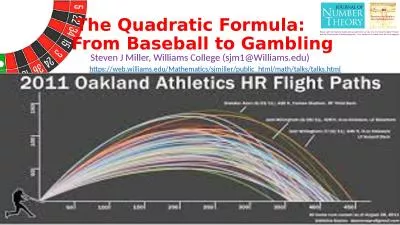PPT-Years ago, We learned to use the quadratic formula
Author : ellena-manuel | Published Date : 2017-09-26
to solve The values calculated with Eq 1 are called the roots of Eq 2 They represent the values of x that make Eq 2 equal to zero For this reason roots are sometimes
Presentation Embed Code
Download Presentation
Download Presentation The PPT/PDF document "Years ago, We learned to use the quadrat..." is the property of its rightful owner. Permission is granted to download and print the materials on this website for personal, non-commercial use only, and to display it on your personal computer provided you do not modify the materials and that you retain all copyright notices contained in the materials. By downloading content from our website, you accept the terms of this agreement.
Years ago, We learned to use the quadratic formula: Transcript
Download Rules Of Document
"Years ago, We learned to use the quadratic formula"The content belongs to its owner. You may download and print it for personal use, without modification, and keep all copyright notices. By downloading, you agree to these terms.
Related Documents

